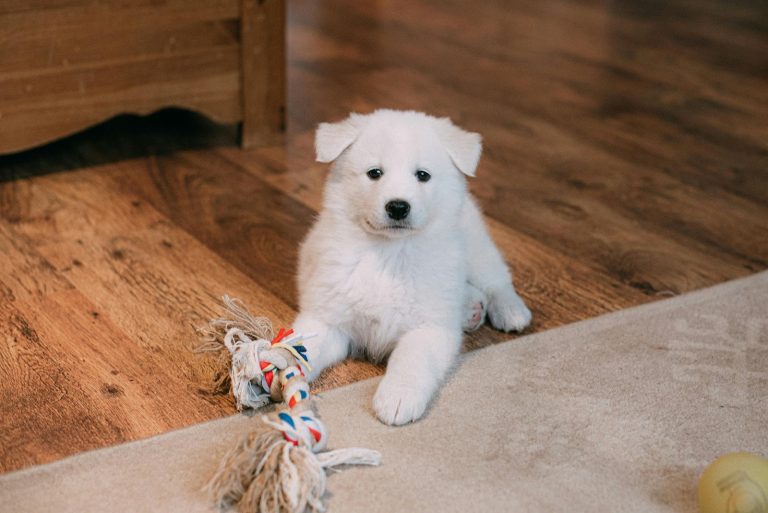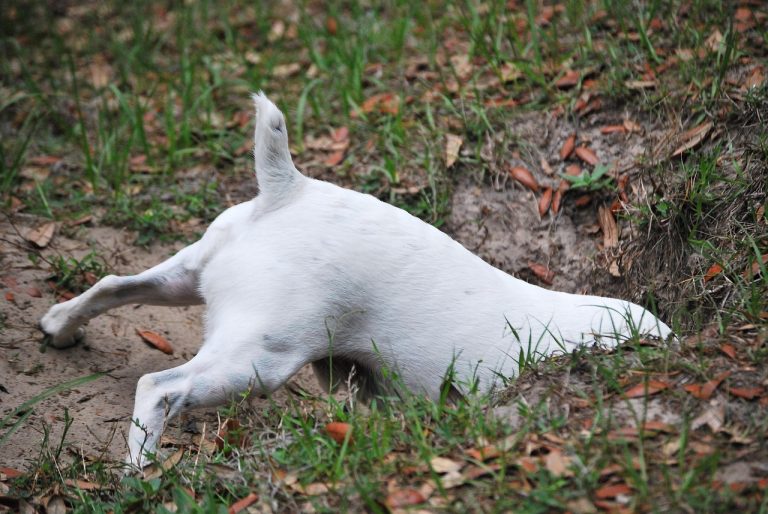7 Reasons That Dogs Chase Their Own Tails
Dogs may perform this behavior because it’s in their genes.

Sitting back and watching my pit bull and Chihuahua playing together is, an a word, rewarding.
It makes the everyday problems in life go away — if only briefly — as I gaze at the 2 of them enjoying each other’s company. Although Bunker is much larger than Angel, when they are in play motion, size does not matter.
A game they seem to like best is chasing Angel’s tail. She will run around and around in tight little circles trying to catch her tail. Often, she will succeed, and then Bunker decides to join in to chase Angel’s tail too.

Don’t leave your pet’s safety to chance
Sign up for Petful recall alerts today.

Dogs Have Their Reasons
So where does this behavior of chasing one’s own tail come from?
There are several reasons that dogs chase their tails, including:
- Being confined in small quarters where movement is restricted.
- Boredom, especially in older dogs.
- The presence of fleas or irritated anal glands.
- Canine compulsive disorder (rare, but can be treated with anti-obsessive medications).
- Hereditary tendency, with the behavior being passed down from generations, especially in breeds like German Shepherds, Australian Cattle Dogs and bull terriers.
- High cholesterol, which could mean that the dog’s cholesterol levels have blocked the flow of brain hormones that control mood and behavior (more exercise could be the solution, in this case).
- Not knowing why the tail is there to begin with. This part of a puppy’s body is fascinating to him, especially if he has no other playmates.

When Tail Chasing Becomes Obsessive
While most tail chasing stops as a puppy gets older, many adult dogs continue this practice, sometimes just to get attention and sometimes just to pass the time. Even though tail chasing can be entertaining for all involved, at times, you may want to distract your dog from this behavior by offering her a ball or a Frisbee to chase every so often.
According to the book Why Dogs Do That: A Collection of Curious Canine Behaviors, in some cases, a visit to your veterinarian may be necessary. If you notice Stewie gnawing and scratching at his hindquarters, he could have a skin ailment or a wound prompting him to go after his tail.
This pupster is having a ball chasing his own tail:

While I’m on the medical issues concerning this behavior, let me also mention that epileptic-type disorders, which bring about seizures, could be the culprit. If your dog exhibits any seizure-type problems, seek your veterinarian’s help immediately.
While celebrity trainer Cesar Millan thinks that tail chasing is sometimes just a canine’s reaction to all the excitement in his life, I have my own opinion as to why my Angel and Bunker chase after the Chihuahua’s tail — they just want to have fun.
It seems much easier for Bunker, who has only a remnant of a tail (his was docked when he was young), to catch Angel’s twiggy little tail. Luckily, he never tries to bite it off or anything like that. Once he catches it, Bunker lets go, takes a little break — and the great chase is on again.







